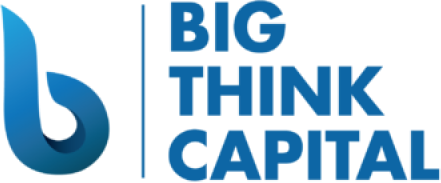Unlock Your Business Growth: A Deep Dive into Working Capital Optimization and The Effects of Recent Fed Interest Rate Decisions
Estimated Reading Time: 7 minutes
- Understand the importance of working capital for small businesses.
- Learn how Fed interest rate decisions impact business financing.
- Explore effective strategies to optimize your working capital.
- Discover how Big Think Capital can support your funding needs.
- Understanding Working Capital
- The Impact of Fed Interest Rate Decisions
- Working Capital Optimization Strategies
- The Role of Big Think Capital In Your Growth Journey
- Practical Takeaways for Business Owners
- Conclusion
- FAQ
Understanding Working Capital
Working capital is the difference between a company’s current assets and current liabilities. It represents the short-term financial health of a business and is vital for day-to-day operations. Adequate working capital enables a company to cover operational expenses, invest in growth opportunities, and withstand fluctuations in cash flow.
- Current Assets: This includes cash, accounts receivable, inventory, and other short-term assets that can be converted to cash within one year.
- Current Liabilities: This consists of accounts payable, short-term debt, and other obligations that must be paid within the same time frame.
A positive working capital figure indicates that a business can meet its short-term obligations, while a negative figure can suggest financial troubles or limited operational capabilities.
The Impact of Fed Interest Rate Decisions
Recently, the Federal Reserve has made headlines with its decisions on interest rates, aimed at controlling inflation and stabilizing the economy. In 2025, these decisions will significantly influence the lending landscape for small businesses.
The Fed’s adjustments to interest rates can have several effects:
- Cost of Borrowing: Higher interest rates typically lead to increased costs for financing options such as loans and credit lines. This can make it more challenging for small businesses to access the funds needed for growth.
- Cash Flow Management: Higher borrowing costs necessitate careful financial planning. Business owners may need to adjust their cash flow strategies to account for increased interest payments.
- Investment Decisions: As the cost of borrowing rises, small businesses must be strategic about investments. Evaluating the return on investment (ROI) becomes essential to ensure that funds are utilized effectively.
Working Capital Optimization Strategies
Given the current economic climate, optimizing your working capital has never been more critical. Here are several strategies that can help you enhance your working capital position:
- Accelerate Accounts Receivable Collections
- Invoicing Timely: Send out invoices as soon as services are rendered or products are delivered. The quicker you bill your clients, the faster your cash flow improves.
- Payment Terms Flexibility: Consider offering discounts for early payments. This not only incentivizes prompt payment but also fosters goodwill with your clients.
- Enhance Inventory Management
- Optimize Stock Levels: Adopt inventory management techniques such as Just-In-Time (JIT) to reduce holding costs and free up capital tied in unsold stock.
- Evaluate Supplier Terms: Negotiate better terms with suppliers to extend payment periods without compromising your relationships.
- Cut Unnecessary Expenses
- Perform Regular Financial Audits: Regularly assess your expenses to identify areas where you can cut costs without impacting the quality of your offerings.
- Use Technology: Implement financial management tools to gain insights into spending patterns and discover opportunities for savings.
- Utilize Financing Options Wisely
- Lines of Credit: These can be an excellent resource for covering short-term cash shortfalls and should be utilized strategically to manage working capital effectively.
- Equipment Financing: If you’re looking to expand capabilities without depleting cash reserves, consider financing options that specifically focus on equipment acquisition.
The Role of Big Think Capital In Your Growth Journey
At Big Think Capital, we understand the nuances of funding and the challenges small businesses face, especially in the context of fluctuating interest rates and economic uncertainty. Our team of experts can help you explore various financing products tailored to your needs, such as:
- Working Capital Advances: Quick access to cash that allows you to manage day-to-day operations without disrupting growth plans.
- SBA Loans: Offer long-term financing options at competitive rates backed by the U.S. Small Business Administration.
- Equipment Financing: Supports small businesses in acquiring necessary equipment while preserving cash flow.
Practical Takeaways for Business Owners
As you navigate the evolving financial landscape, here are three practical takeaways to consider for your business:
- Stay Informed: Monitor interest rate trends and Fed announcements to anticipate how these decisions could impact your financing options.
- Evaluate Your Financing Options: Assess which financial products best suit your business needs. Understand not just the cost but also how terms align with your operational strategy.
- Prioritize Working Capital Management: Regularly review and optimize your working capital by improving collection processes, managing inventory effectively, and controlling costs.
Conclusion
In 2025, the small business financing environment will continue to evolve, driven by both economic conditions and the Federal Reserve’s policy decisions. Understanding and optimizing your working capital is crucial to ensuring your business not only survives but thrives.
At Big Think Capital, we are committed to empowering small businesses by providing access to the right funding solutions. If you are ready to explore your financing options and optimize your working capital strategy, we invite you to connect with one of our funding experts.
Learn more about how Big Think Capital can support your business growth at bigthinkcapital.com. Your journey to unlocking potential begins here.
FAQ
What is working capital? Working capital is the difference between a company’s current assets and current liabilities.
How do interest rates affect small businesses? Changes in interest rates affect the cost of borrowing, which can influence a small business’s financing options.
What strategies can help optimize working capital? Strategies include speeding up accounts receivable collections, managing inventory efficiently, and minimizing unnecessary expenses.






